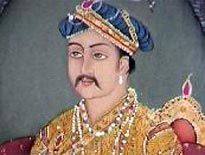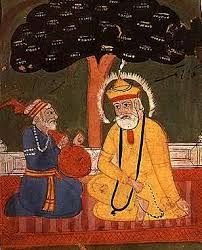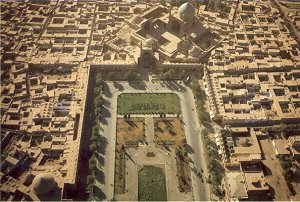Section 2
Working together using this wiki
Think of this wiki as a shared online whiteboard. The entire class can share information using this wiki, making your research accessible to everyone. You will not have to complete the IDs all by yourself! Play around with this wiki: Notice how you can add comments to a page, see what people have changed, and edit all the text.
How to add your information to this wiki...
- Click on the Edit tab at the top.
- Scroll down to your term and copy and paste your information. (Be sure to add your name after the term)
- Use the right toolbar to insert images and files (be sure to keep your images small - we are all sharing this page)
Use this checklist to check your work: (I use this list to grade your wiki)
- Add your name next to the term/concept you are responsible for (5 pts)
- Underline the term/concept - make it bold or heading 2 size (5 pts)
- Brief summary of term/concept - use bullets or highlight key points (55 pts)
- Picture/map - must include caption (keep image small in size) (image = 15 pts; caption =10 pts)
- Please provide a FULL citation for the source(s) used - www.citationmachine.net can help. (5 pts)
- Post your info in the right location - instead insert your image with caption right under your content. (5 pts)
You are responsible for ONE term this week.
- When you are done, hit Save at the bottom and view your work (make changes (Edit) as necessary).
- TIP: only one person can edit this wiki at a time, so I suggest you create your entry in a word program first. Then you can simply copy and paste it right in when the wiki is available for edit.
Identifications - Muslim Empires
Osman and the Ottoman Empire - Mindy Xiong
- Early 14th Century Osthman (or Osman) the first found Empire that would last over 6 Centuries.
- 1239 - Osman emerged as Leader of Turks in fighting Byzantine Empire.
- The main areas of his expansion were western Asia Minor & Southeaster Europe.
- boys were trained to become soldiers and administrators
- they filled ranks of infantry, called the Janizaries (also spelled Janissaries)
- also known as the most fearsome military force in Europe for centuries

Here is a Map of the Ottoman Empirein 1481 - 1683. (Bluish & Purplish Color.)
Spitfire, VII. "The Ottoman Empire." All EMpires. UNKNOWN. Online History Community. 14 Jan 2009 <http://www.allempires.com/article/index.php?q=ottoman_empire>
UNKNOWN, UNKNOWN. "The Ottoman Empire in the Seventeenth Century." The Ottoman Empire in the Seventeenth Century. October 17, 2007. UNKNOWN. 14 Jan 2009 <http://history.wisc.edu/sommerville/351/ottomans.htm>
The sultan and his viziers-Leya Wood
· Sultans would pit warriors against groups in the nation.
· Some of the groups were Janissaries, Islamic Scholars, and Legal experts
· Dhimmis controlled commerce and were protected by Ottoman rulers.
· They meant effective administration and tax relief for the annexed areas.
· Sultans were distant form their subjects
· Bureaucracy was headed by a Vizier
· Vizier was the head of the administration and held more power than sultan.
· Death of sultans led to warfare between sons.

Here is the sultan eating with his viziers.
Stearns, Peter, Michael Adas, Stuart Schwartz, and Marc Jason Gilbert.World Civilizations. 4th ed. New York: Pearson Education, Inc., 2006.

Istanbul-Crystal Tsang
-Istanbul was called Constantinople when Mehmed the Conqueror from the Ottoman took over
-It was the capital of the Ottoman Empire, Latin Empire, and the Roman Empire
-It is now the capital of Turkey
-Christians and Jews were encourage to move into the city for religious purposes
-In 1459, Istanbul was the largest city in Europe and was divided into four sections
-An earthquake in Istanbul on July 14th, 1509 destroyed most parts of the city
-Edirne, which was the capital of the Ottoman Empire later on, was moved to Istanbul for the third time



A current view of Istanbul. This is the Hagia Sophia.
Works Cited:
"Istanbul The Ottoman Era istanbul.com." Istanbul City Guide | istanbul.com. 27 Jan. 2009 <http://english.istanbul.com/ContentPrint.aspx?CatId=3592&Type=detail>.
Mehmet II and his conquest of Constantinople - Lauren Sink
· Sultan of the Ottoman Empire for a short time from 1444 to September 1446 and later from February 1451 to 1481
· At the age of 21, conquered Constantinople bringing an end to the medieval Byzantine Empire
· From this point onward, he claimed the title of Caesar in addition to his other titles
· He was also claiming the legacy of the Roman Empire
· In 1451 Mehmed II reclaimed the throne upon his father's death
· Two years later he brought an end to the Byzantine Empire by capturing its capital during the siege of Constantinople
· Conquered the Despotate of Morea in the Peloponnese in 1460
· Conquered the Empire of Trebizond in northeastern Anatolia in 1461
 Mehmet II became famous for conquering Constantinople.
Mehmet II became famous for conquering Constantinople.
Wikipedia. "Mehmed II". 26 January 2009. 26 January 2009. <http://en.wikipedia.org/wiki/Mehmed_II>.
Suleiman (Suleyman) the Magnificent - Rishi Simha

Suleiman the Magnificent was an Ottoman ruler born in 1520. He is known for his great justice, his executive decisions, his conquests, and his construction projects. Suleiman created fear in Europe unparalleled before by conquering Rhodes, Hungary, and much of Austria. He wished Europe to remain destabilized and thus, invested heavily in Protestant states to ensure a division between Christianity. With Sinan, one of history’s greatest architects, under his command, bridges, mosques, and palaces were constructed that couldn’t be rivaled anywhere else. Most historians feel that Suleiman’s rule took place during the peak of Ottoman civilization; he passed away in 1566.
Source: Hooker, Richard. "Suleyman the Just." The Ottomans: Suleyman. 1996. Washington State University. 20 Jan 2009 <http://wsu.edu/~dee/OTTOMAN/SULEYMAN.HTM>.
Janissaries
Janissaries – SanMartin
Janissaries a group of soldiers of the Ottoman Empire, they were composed of slaves taken from different parts of they empire, many parents sent their sons into the armies simply because they had the benefit of receiving an education and had opportunities to advance in rank. Further into their establishment the janissaries grew in tremendous numbers and so they became a very powerful group that could control who the next ruler or sultan was to be. This created a problem because no longer was the sultan the main central ruler as he held no real power, but instead the power remained in the Janissaries corps, and grand viziers.

This image shows the typical Janissaries and their dress. Most of them were young and during the time that they first emerged they were not very powerful and influential in Ottoman business, however their numbers and power grew quite quick and their influence grew with it.
"Jannissaries." 29 Jan 2009 <http://www.enterstageright.com/archive/articles/0702/070102janissaries.jpg>.
N. Stearns, Peter , Micheal Adas, Stuart B. SchWartz, and Marc J. Gilbert.World Civilizations. Ap* 4th Edition. New York: Pearson Longman Education, 2006.
Harems: Shampa Panda
-In Islamic culture, according to Quaranic law there are certain procedures that must be followed regarding women.
-Harems were areas in Muslim houesholds that were restricted to women.
-Not just wives and concubines of the men but also mothers, sisters, and daughters.
-Most prevalent in the Ottoman Empire and other Islamic societies in the post classical period.

An artistic rendering of an Ottoman harem, specifically the terrace area where bathing took place.
"The terrace of the seraglio." wikipedia 21 Jan 2009 http://en.wikipedia.org/wiki/File:The_terrace_of_the_seraglio.jpg.
Siege of Vienna (1529)- Matt Myers
· It was the first attempt of the Ottoman Empire, led by Sultan Suleiman I, to capture the city of Vienna, Austria.
· In August 1526, Sultan Suleiman I had defeated the forces of King Louis II of Hungary at the Battle of Mohács.
o the Ottomans gained control of southern Hungary,
o Ferdinand I of Austria claimed Hungary for himself.
§ Ferdinand, however, won recognition only in western Hungary;
· In spring 1529, Suleiman mustered an army with the aim of securing control of Hungary and reducing the threat posed at his new borders by Ferdinand and the Holy Roman Empire.
o He had anything from 120,000 to more than 300,000 men.
o His army faced obstacles from the outset.
§ The spring rains caused flooding in Bulgaria and rendered parts of the route barely passable.
· As the Ottomans advanced, those inside Vienna prepared to resist.
o Vienna was entrusted to a seventy-year-old German mercenary named Niklas Graf Salm.
o The Viennese made extensive preparations for the pending attack.
· When the Ottomans arrived, they found Vienna heavily fortified and well-guarded, yet they attacked nonetheless.
o Due to the depletion of his army from the bad marching conditions and the good defense of Vienna, Suleiman found himself getting no where.
o On October 12, he decided on one last attack before the retreat. However, this assault was repulsed as well.
· The siege signaled the Ottoman Empire's high-water mark and the end of Ottoman expansion in central Europe.
· Although the battle was an obvious loss to Suleiman, his achievement was in consolidating the gains of 1526 and establishing the puppet kingdom of John Zápolya as a buffer against the Holy Roman Empire.

The Siege of Vienna was the stereotypical siege battle. Through a combination of good preparation, superb leadership, and bad weather which hurt the attacking Ottomans, the Austrians were able to achieve what was seemingly impossible and withhold the oncoming attacks.
Sources:
"Siege fo Vienna." Wikipedia. 2009. 27 Jan 2009 <http://en.wikipedia.org/wiki/Siege_of_Vienna>.
"The Siege of Vienna of 1683." WebChron. 009. 27 Jan 2009 http://www.thenagain.info/webchron/EastEurope/ViennaSiege.html.
Safavid Empire
Abbas the Great and Isfahan
The Delhi Sultanate- (Sara Marshall)
-->The Delhi Sultanate is the term for the many countries/dynasties that ruled in India from 1206 to 1526.
-->Many different dynasties (mainly Afghan) ruled these countries. (Example-Sayyid dynasty)
-->These countries were part of the Islamic faith.
-->They were labeled with a monarchy government style.
-->The Delhi Sultanate is the only Sultanate to state that they wanted to possess a female ruler in India. (Princess Razia Sultana)
-->The Delhi Sultanate was founded after Muhammad of Ghor defeated Prithvi Raj and captured Delhi in 1192.
-->The first dynasty was referred to as the Slave Dynasty.

This picture shows the historical map of the Delhi Sultanate countries.
Mahajan, V.D.. "Delhi Sultanate." 2007. Columbia University Press. 25 Jan 2009 <http://www.infoplease.com/ce6/history/A0815061.html>.
Babur the Tiger (Sarah Mann)
- Muslim founder of Mughal dynasty and first emperor
- Ruled from 1483 to 1530
- Mother was descendant of Genghis Khan and father was descendant from Timur
- First Islamic to use musket and artillery
- Conquered much territory
- Took over all most all of India
- Was a scholar, poet, and warrior
- Wrote poetry in Persian and in Turkic
- Wrote an autobiography – The Baburnama
- Real name is Zahiruddin Muhammad
- His troops weren’t allowed to harm innocent people
Hooker, Richard. "The Mughals: Babur." World Civilizations. 1996. 18 Jan 2009 http://www.wsu.edu/~dee/MUGHAL/BABUR.HTM.
"Babur." MSN Encarta. 2008. Microsoft. 18 Jan 2009 http://encarta.msn.com/encnet/refpages/refarticle.aspx?refid=761572349.
 This is a picture of Babur the Tiger.
This is a picture of Babur the Tiger.
"Babur - Founder of the Mughal Dynasty ." ExoticIndiaArt.com. 2009. www.unlimitedfx.com. 22 Jan 2009 http://www.exoticindiaart.com/product/MF21/.
Mughal Empire
The Taj Mahal- Brianna Kosko
- Mughal Emperor Sha Jahan built the Taj Mahal
- The Taj Mahal is a mausoleum
- Building began around 1632 and was completed around 1653
- It is located in Agra, India
- It was built in memory of the emperor's favorite wife, Mumtaz Mahal
- It's important beacause it's considered one of the finest eaxamples of Mughal architecture

This is a picture of the Taj Mahal.
Tillitson, G.H.R. (1990). Architectural Guide to Mughal India, Chronicle Books
Akbar the Great- Cory Hume
Akbar the Great is the grandson of Babur who founded the Mughal dynasty. He succeeded as ruler of the Mughal Empire from 1556 to 1605 after his father, Nasiruddin Humayun. He was only 14 when he became emperor and he is considered possibly the greatest of all of the rulers of the Mughal Empire. He achieved several military victories with defeats of Afghan tribes and the Hindu king Samrat Hemu Chandra Vikramaditya. He had several titles including artisan, armorer, blacksmith, and inventor. Several of his greatest contributions came in the form of art such as the pieces of the Akbar-nama and the Ain-i-Akbari. Other significant impacts were the invention of the first prefabricated homes and movable structures. He was an emperor known for his sound personality and strong desire for the greatest positive impact for his civilization.

This is a painting of Akbar the Great. A mustache is very prominent in most portraits depictin Akbar (which I thought was pretty amusing.) He is said to be the greatest emperor the Mughal Empire will ever see.
"The Mughals: Akbar." Washington State University - Pullman, Washington. 27 Jan. 2009 http://wsu.edu/~dee/MUGHAL/AKBAR.HTM.
Aurangzeb (Laura Guidry)
(1658-1707)
Mughal Empire's Last Great Emporer and Conqueror
Aurangzeb (name meaning ornament of the throne) followed after his father Shah Jahan to the throne. There he acquired the titles Mohi-eddin, reviver of religion, and Alam-gur, conqueror of the world. Aurangzeb's reign over the empire has been called the most brilliant time in Hindustan history however the empire's wealth was simply masking a unstable nation that was slowly crumbling. He was a well educated ruler who held himself to strict religious codes and had a good sense of political realism who also harbored a fierce appetite for power. He tried to bring Muslim orthodoxy into the empire and was bothered by the Indian and Hindu influences found in the empire. The empire was the largest it had ever been under his rule. He captured Bijapur and Golconda but the costly wars combined with his puritanical outlook kept him from supporting the arts and learning as his predeccesors had generously done. He held an intolerant policy for Hindus and that along with the rapid growth of Mahratta power put strain on the empire.

Aurangzeb, one of the greatest rulers in Hindustan history.
"Aurangzeb." NNDB: Tracking the entire world. 20 Jan. 2009
<http://www.nndb.com/people/616/000097325/>.
"The Reign of Aurangzeb, 1658-1707." Islamic Arts and Architecture Organization. 20 Jan. 2009
The Sikhs
By the end of Aurangzeb’s reign, the Mughal Empire was far larger than it had been under any of the earlier emperors, but it was also more unstable. Internal rebellions, particularly those mounted by the Marattas in western India, put an end to effective Mughal control over large areas.
Ø The Sikhs originated in the north-western part of India.
Ø The Sikhs tried to bridge between the differences Hindu and Muslim.
Ø But Mughal persecution of the sect, which was seen as religiously heretical and political threat to the dynasty, eventually ally transformed Sikhism in to a staunchly anti-Muslim force within the subcontinent.
Ø In addition, Muslim kingdoms in the east and central India continued to resist the Moghal hegemony.

Abbas I the Great and Isphahan- Richard Monroe
Abbas I the Great
-
ruled from 1588-1629
-
moved persian court to Isphahan
-
supported the arts; his reign was defined as the pinnicle of Persian Art
-
The Ottoman Empire had taken control of some northern Persian territories. To the east, the Uzbek army was encroaching the border. Abbas the Great created a confederation to defend Persia on two fronts and was, at the time, was successful.
Isphahan-
-
the most famous pieces of architecture were built by Abbas I.
-
The city is located along the Zayandeh Rud in central Iran
-
Imam square was utilized as a market, a fair ground, and for polo games. Abbas' original polo goalposts are still there
-
Bridges- the bridges that cross the Zayandeh Rud [River] are built with sequences of classic arabic arches with an octagonal section in the center
-
Imam mosque- it is one of the most highly regared mosques in present day Iran. Utilized a new form of turquoise tile in the arch and dome.

Imam Square and Mosque
Kianush, K. “Isphahan.” Historical Cities of Iran. 30 January 2009. 1998 <http://www.art-arena.com/esfahan.htm>.
“Notes on Abbas the Great.” JBOC notes on oriental Rugs. 30 January 2009. http://www.spongobongo.com/her9992.htm.
Comments (0)
You don't have permission to comment on this page.